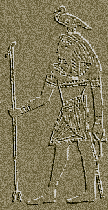Drawing of the god Geb holding an ankh, a symbol of life.
Click on image for full size
Geb
Thousands of years ago, Geb was worshipped at the city of Heliopolis in lower Egypt as the earth god. Geb was depicted as a bearded man with a goose on his head. He was the provider of crops and a healer. Egyptian people believed that Geb laughter caused earthquakes. It was feared that because Geb was an Earth god, he might imprison the dead, preventing others from having another life in the afterworld.
According to an Egyptian legend, Geb married his sister Nut, the sky goddess, without the permission of the powerful Sun god Re. Re was so angry at Nut and Geb that he forced their father Shu, the god of air, to separate them. That is why the Earth is divided from the sky. Moreover, Re prevented Nut from having children in any month of the year.
But, fortunately, Thoth the divine scribe decided to help her. Thus, he induced the Moon to play with him a game of draughts, where the prize was the Moon's light. Thoth won so much light that the Moon had to add five new days to the official calendar. Thus Nut and Geb could finally have four children: Osiris, Seth, Isis, Nephthys. Geb was identified by the ancient Greeks as the god Cronos.
You might also be interested in:
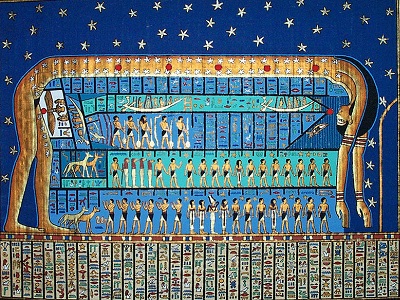
Nut was the Egyptian sky goddess. She was depicted as a giant, naked woman who was supporting the sky with her back. Her body was blue and covered by stars. Ancient documents describe how each evening,
...more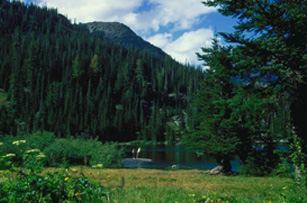
According to the Maori people of New Zealand, Rangi was the Sky Father and his wife was the Mother Earth, Papa. At the beginning of time, Rangi, the male sky, and Papa, the female Earth, were entwined
...more
According to the Maori people of New Zealand, Rangi was the Sky Father and his wife was the Mother Earth, Papa. At the beginning of time, Rangi, the male sky, and Papa, the female Earth, were entwined
...more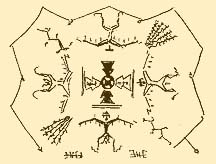
Ahsonnutli was the sky father and chief deity of the Navajo Indians. He created heaven, Earth, and the sky. Each of the four cardinal directions was supported by a giant. Each direction was also associated
...more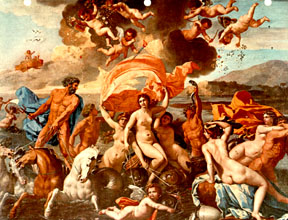
Amphitrite was one of the fifty Nereids, the attendants of the sea-god Poseidon. Poseidon (Neptune) had fallen in love with Amphitrite after seeing her dancing on the island of Naxos. Amphitrite rejected
...more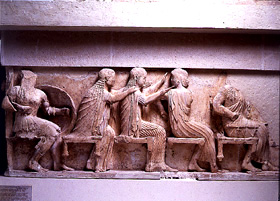
Aphrodite was the Greek goddess of love and beauty. She was known to the Romans as Venus. There were actually two different Aphrodites, one was the daughter of Uranus, the other the daughter of Zeus and
...more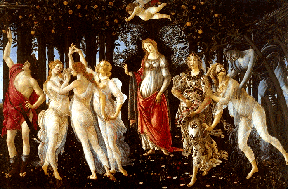
In Greek mythology, Apollo was the son of Jupiter(in Greek Zeus) and Leto (Letona). He was the god of the Sun, logic, and reason, and was also a fine musician and healer. Leto travelled all over Greece
...more


